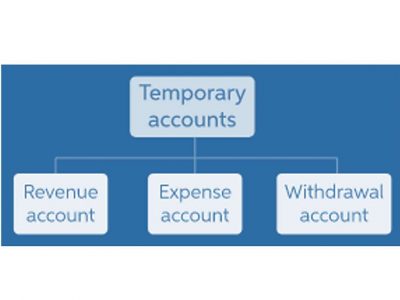
If you’re dreaming of starting a nonprofit that makes a difference, let’s make it official—the right way. Because the organization serves the public, it must operate with full transparency. Its finances, including salaries, are available to members of the public. A 501(c)(3) organization must operate within the confines of the law pertaining to 501(c)(3) organizations to maintain its favorable tax treatment.

Does a 501(c)( pay capital gains tax?
- If your organization needs to report a change of name, see Change of Name- Exempt Organizations.
- If you’re wondering how to start a 501(c)(3), know that legal, accounting, and technical hurdles must be cleared along the way.
- Generally, organizations required to apply for recognition of exemption must notify the Service within 27 months from the date of their formation to be treated as described in section 501(c)(3) from the date formed.
- Donorbox gives nonprofits the chance to collect weekly, monthly, quarterly, and annual recurring donations.
Section 501(c)(3) organizations are restricted in how much political and legislative (lobbying) activities they may conduct. For more information about lobbying activities by charities, see the article Lobbying Issues PDF; for more information about political activities of charities, see the FY-2002 CPE topic Election Year Issues PDF. The next step is usually to appoint a founding board of directors and to hold the first board meeting. After that, the board needs to follow up on obtaining all of the proper licenses and permits, and to open a bank account for the nonprofit’s funds. To apply for tax-exempt status, you must complete IRS Form 1023, Application for Recognition of Exemption Under Section 501(c)(3) of the Internal Revenue Code. Completing this form can be a daunting task because of the legal and tax technicalities you’ll need to understand.
Step 8: File for tax-exempt status
- That indicates what was donated and the value of the donation and states that no goods or services were received in exchange.
- This section relates to your nonprofit’s classification as a public charity or private foundation.
- The Internal Revenue Service (IRS) recognizes more than 30 types of nonprofit organizations but only those that qualify for 501(c)(3) status can say that donations made to them are tax-deductible.
- If you hire any independent contractors, you need to keep copies of any Miscellaneous Income (Form 1099) documents that are provided to them.
- If your website uses “5013c” instead of “501(c)(3),” you might be hurting your ability to show up in search results.
- That’s why our SureSTART program is designed to walk you through the process—step-by-step.
Section 501(c)(3) is the portion of the US Internal Revenue Code that allows for federal tax exemption of nonprofit organizations that meet the code’s requirements. These nonprofits may be considered public charities, private foundations, or private operating foundations, which we’ll explain in more detail later. Generally, organizations required to apply for recognition of exemption must notify the Service within 27 months from the date of their formation to be treated as described in section 501(c)(3) from the date formed. When the IRS determines that an organization qualifies for exemption under section 501(c)(3), it will also be classified as a private foundation, unless it meets the requirements to be treated as a public charity. This section relates to your nonprofit’s classification as a public charity or private foundation. Public charities, which include churches, schools, hospitals, and a number of other groups, derive most of their support from the public or receive most of their revenue from activities related to tax-exempt purposes.

Step 3: Name your nonprofit
- This income is used to support the work of public charities through grants, rather than being disbursed directly for charitable activities.
- Most potential sources of funding require an approved letter of determination.
- Due to systemic limitations, these organizations appear on the auto-revocation list showing a Revocation Date between April 1 and July 14, 2020.
- Pretty much every major transaction your nonprofit engages in will require an EIN.
Even if your state doesn’t require this, recruiting a board before incorporating is helpful. To help you move through the motions of establishing a nonprofit, we’ve outlined nine steps below. You can also read this in-depth checklist to make sure you don’t miss normal balance anything.

- The IRS will only say that “applications are processed as quickly as possible” and “are processed in the order received by the IRS.” However, it does provide a list of 10 tips that can shorten the process.
- To get the most out of your tax-exempt status, you’ll want to file your Form 1023 within 27 months of the date you file your nonprofit articles of incorporation.
- You should consult with local experts to ensure that your new nonprofit complies with state and federal laws and requirements.
- In order for a corporation or other qualifying entity to receive 501(c)(3) status, it must apply to the IRS for recognition by filing Form 1023 (or Form 1023-EZ), Application for Recognition of Tax Exemption.
- When an organization files an annual return (such as Form 990 or 990-EZ), it must report the changes on its return.
- Be aware, the user fee will be $275 or $600, depending on your application method.
It’s important for organizations that qualify as tax-exempt to know and follow all applicable rules to avoid penalties and other liabilities. In order to remain a public charity (and not a Insurance Accounting private foundation), a 501(c)(3) must obtain at least 1/3 of its donated revenue from a fairly broad base of public support. Public support can be from individuals, companies, and/or other public charities.
Form 990–N (e-Postcard)

The organization must be formed “as a trust, a corporation, or an association” to qualify for 501(c)(3) status, according to the IRS. These include the interests of the creator, the creator’s family, shareholders of the organization, and other designated individuals. None of the net earnings of the organization can be used to benefit any private shareholder or individual.
Application for Recognition of Exemption Under Section 501(c)(
The IRS estimates that preparing this form could take a novice well over 100 hours. Processing times vary greatly, but it typically takes the 5013c IRS between 3-9 months to review your submission and issue a determination letter. The good news is that these challenges are manageable with the help of a nonprofit compliance expert. At Foundation Group, we help 501(c)(3) organizations hold up to financial scrutiny through reliable bookkeeping services and Form 990 filing support.